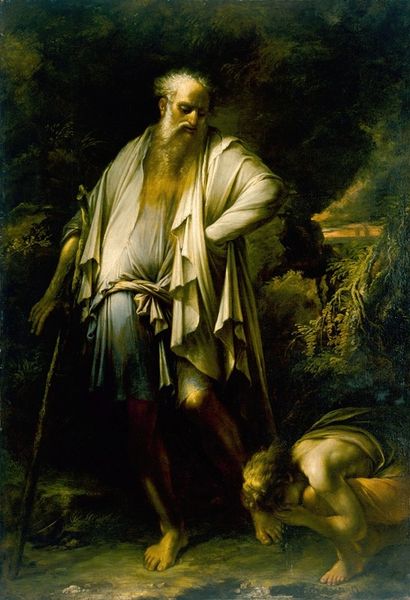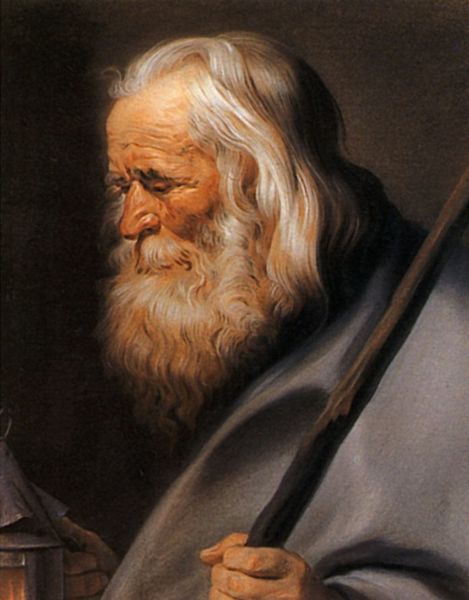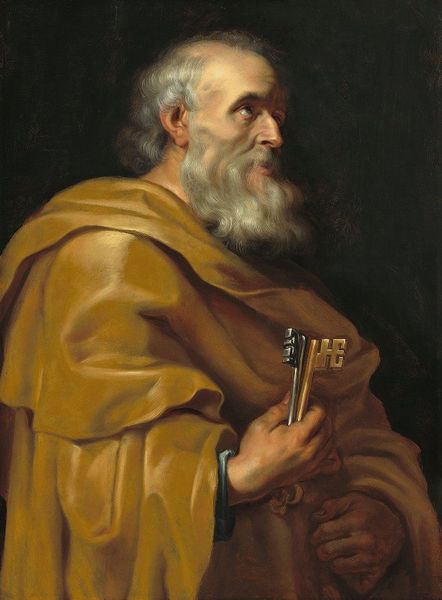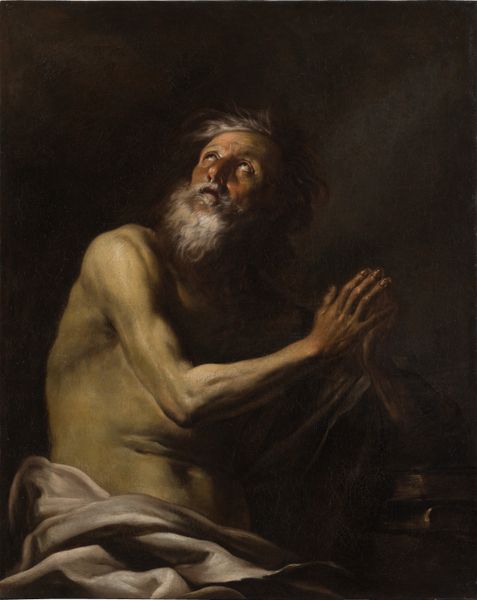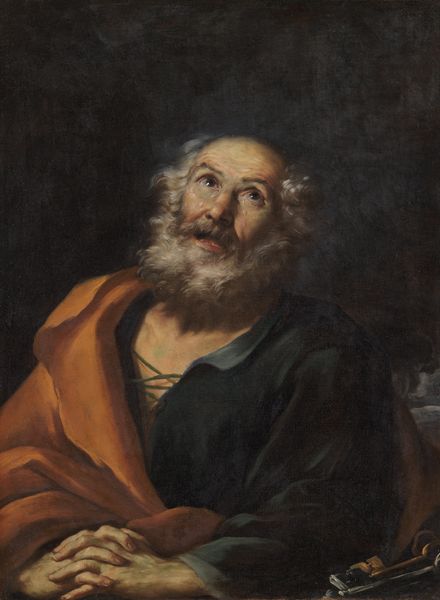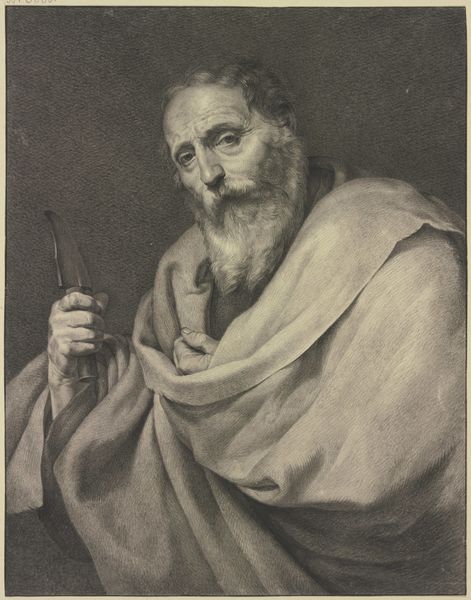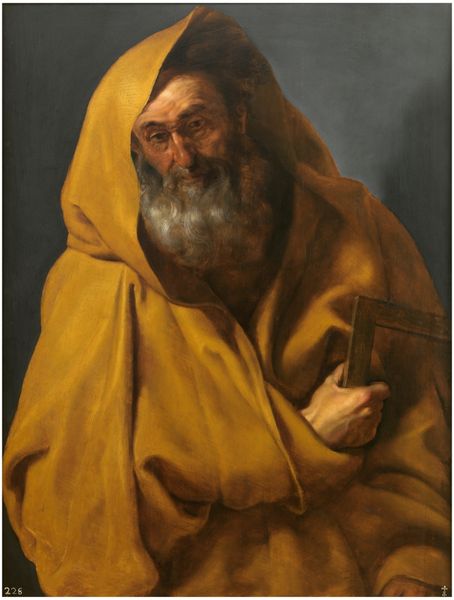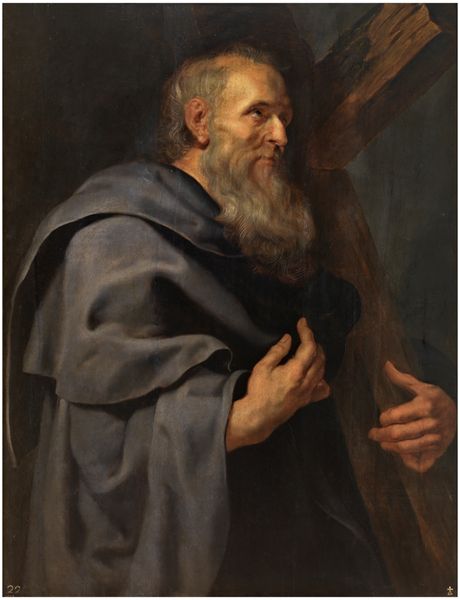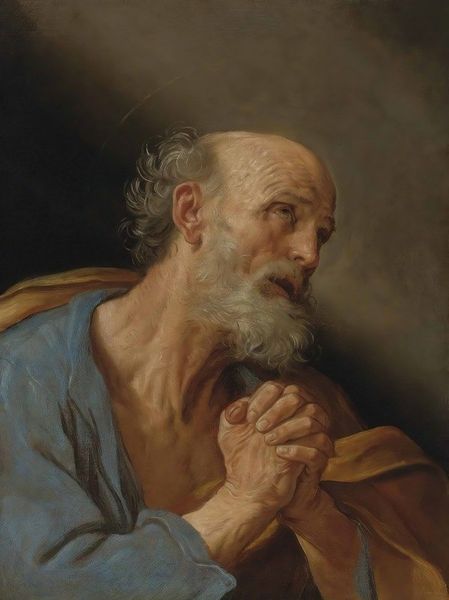
painting, oil-paint
#
portrait
#
baroque
#
portrait
#
painting
#
oil-paint
#
history-painting
Copyright: Public domain
Curator: The artwork before us is Jusepe de Ribera’s “St. Philip,” created in 1610. It's an oil painting typical of the Baroque period. What are your initial thoughts? Editor: There's a stark quality to it, almost immediate. The folds in the drapery command attention. Such texture achieved with paint. Curator: Ribera's historical context certainly shapes its meaning. During the Baroque era, the Catholic Church was seeking to reaffirm its authority after the Reformation. Saints became symbols of unwavering faith. Editor: Precisely, the semiotics of his placement of the saint is worth investigating. His positioning against the dark backdrop with a lighter draped robe focuses my vision directly at him. Then one finds the cross. Curator: It's significant that St. Philip is depicted as an ordinary man, aged, and weathered. Ribera breaks from idealized portrayals of religious figures and engages with his human qualities. This democratization makes a profound political and social statement about piety, faith, and devotion in a post-Reformation society. Editor: Note the careful execution. Consider the structural oppositions within this piece, this position of hands and beard, versus the soft treatment of skin tone. We see the conceptual made concrete through visual means. It's a demonstration of painterly technique but with evident rigor. Curator: Ribera's use of tenebrism is striking here too. That strong contrast between light and shadow intensifies the emotional impact and lends drama to the scene. In many ways the portrait anticipates how narratives of gender and race come to shape theological history and our understanding of saints and sanctity. Editor: So true, that we should not only focus on the technique. Ultimately we cannot escape the artwork's immediate and tactile experience and the manner it speaks directly. Curator: Indeed. The intersection between his technique and social climate converge in "St. Philip", it shows us devotion in an inclusive, engaging way. Editor: It speaks for itself, a synthesis between visual dynamics and period style, it compels.
Comments
No comments
Be the first to comment and join the conversation on the ultimate creative platform.


